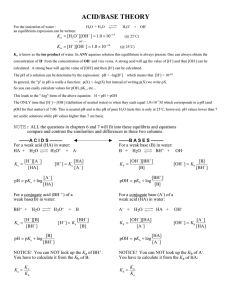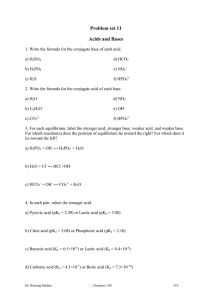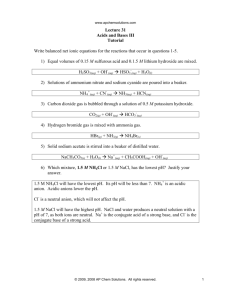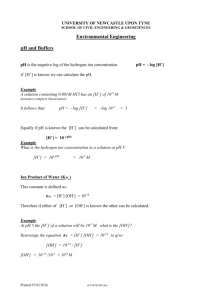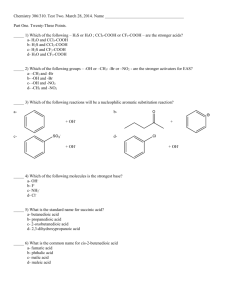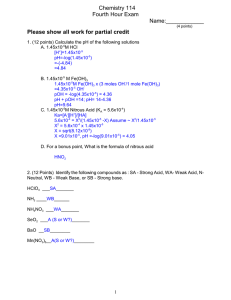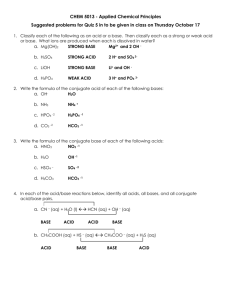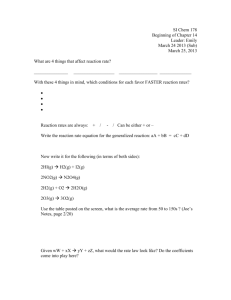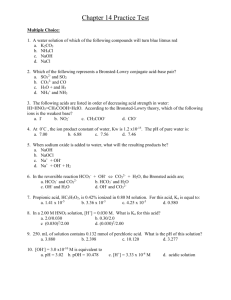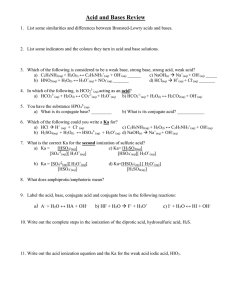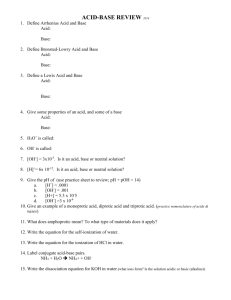70% of weight of most organisms Polar molecules
advertisement
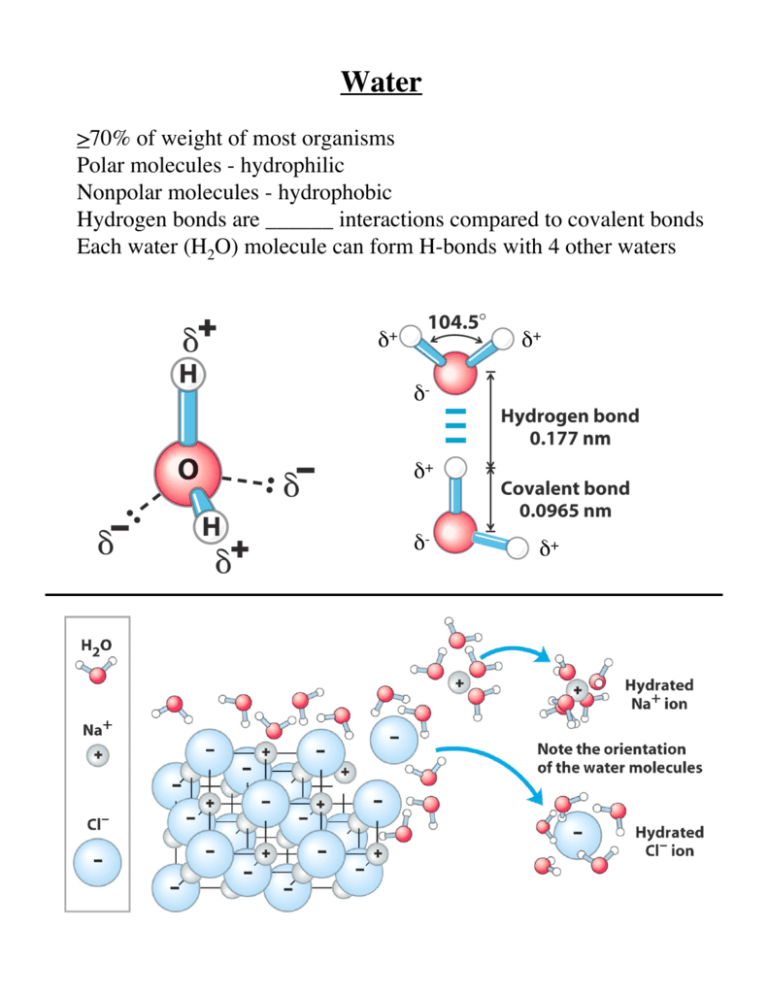
Water >70% of weight of most organisms Polar molecules - hydrophilic Nonpolar molecules - hydrophobic Hydrogen bonds are ______ interactions compared to covalent bonds Each water (H2O) molecule can form H-bonds with 4 other waters δ+ δ+ δδ+ δ- δ+ Water Hydrogen bonding Water Amphipathic - contains regions that are polar (charged) and regions that are nonpolar Water Amphipathic molecules Water Water Water Water WATER Water Water chain in cytochrome f Ionization of Water H2O H+ + OHH+ is a hydrogen ion OH- is a hydroxyl ion 2H2O Actually H3O+ + OH- H3O+ is a hydronium ion Ionization of Water H2O H+ + OH- Keq = [H+][OH-] / [H2O] [H2O] ~ 55.5 mol/L Keq = 1.8 x 10-16 Kw = (Keq) [H2O] Kw = (1.8 x 10-16) (55.5) So Kw = [H+][OH-] = 10-14 (mol/L)2 at 25˚ In pure water, [H+] = [OH-] = 10-7, a neutral solution pH = log (1/[H+]) = -log[H+] A neutral solution has a pH = 7.0 When [H+] > [OH-], pH < 7.0 (acidic) When [H+] < [OH-], pH > 7.0 (basic) Acid/Base Pairs Acid Conjugate base HA+ H+ + A HA H+ + A- HA - H+ + A2- For a strong acid, dissociation is complete so [H+] = [acid] and pH = -log [H+] For weak acid, dissociation is incomplete so Ka = [H+][A-] / [HA] Ka is acid dissociation constant pH is function of [acid] and Ka [H+] = Ka [HA] / [A-] -log[H+] = -logKa + log [A-] / [HA] pKa = -logKa pH = pKa + log [A-] / [HA] (Henderson-Hasselbach) The pK of an acid (base) is the pH at which the acid (base) is half dissociated pH of aqueous fluids Conjugate acid-base pairs Titration Curve acetic acid Titration Curve pK1 = a carboxyl group pK2 = a amino group Buffering against pH changes Buffers: mixtures of weak acids and their conjugate bases Resist changes in pH when small amounts of acid/base are added Maintenance of a specific and constant pH, near 7.0 is needed by cells and organisms - small changes in pH can have a large impact on rate of cellular processes Buffering against pH changes amino acid histidine - weak acid pKa = 6.0 Protein enzymes have an optimum pH for activity Biological buffers - bicarbonate (phosphate too) Exercise lactic acid (H+) produced (pH of blood plasma lowered) reaction pushed to produce more CO2 - exhale Protein catabolism ammonia (NH3) produced and pH of blood plasma is raised Reaction pushed to create more H+ more CO2 from lungs dissolved in blood plasma RATE OF BREATHING keeps BLOOD PH CONSTANT Water as a reactant HYDROLYSIS CONDENSATION
